Crowds of shoppers, most of them young, pack into the narrow corridors on the 15th floor of Ho King Commercial Centre in Mong Kok, especially on the weekends and during holidays. They are drawn to the remade vintage clothes and accessories at CheckThis.
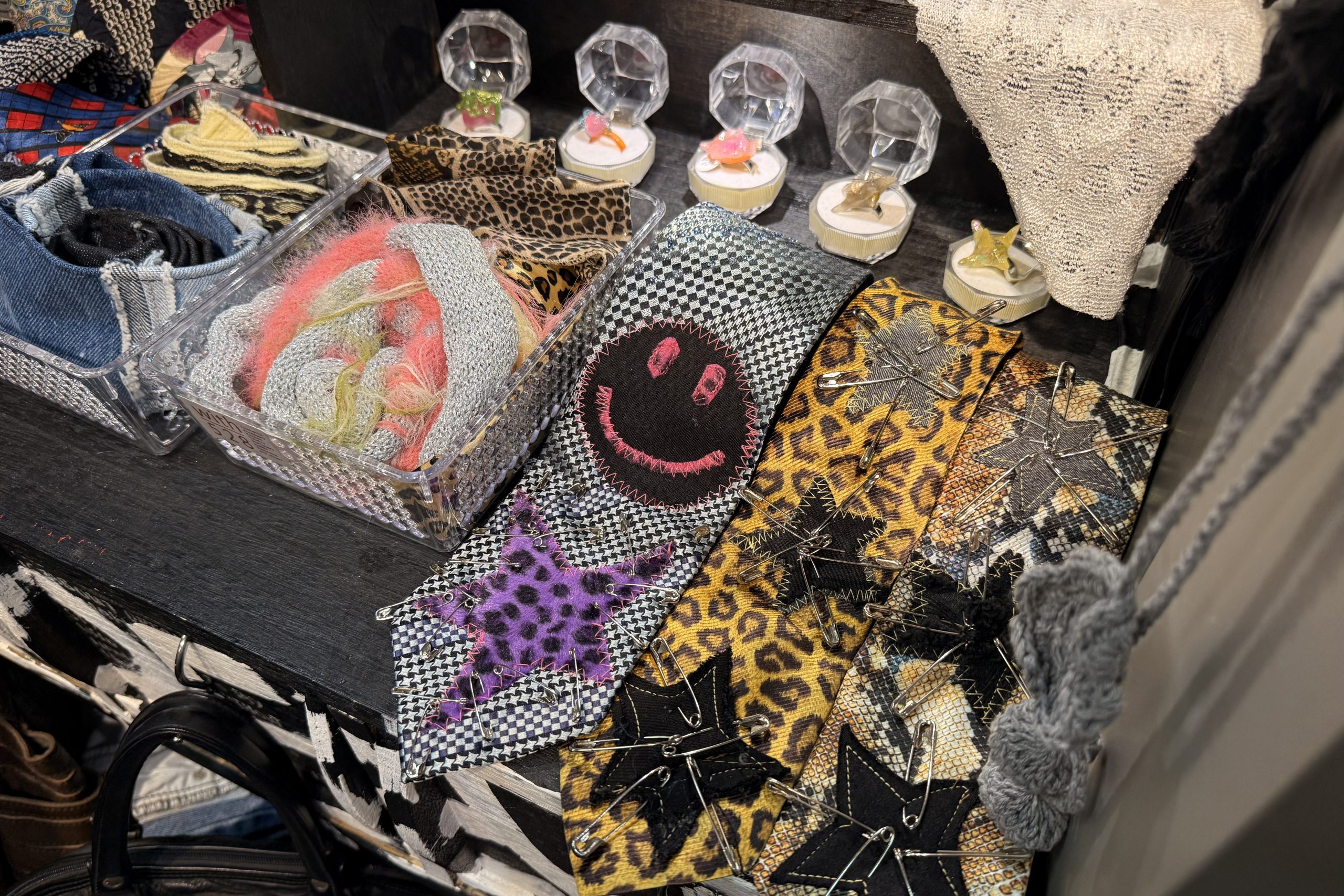
The owner, Mic Chung, 25, designs the products.
“I found some remade items while traveling in Japan and Thailand. At that time, remade vintage clothes or accessories were still not popular in Hong Kong, so I thought it was a potential market I could work for,” she said.
Remade vintage is one of the practices of upcycling, where second-hand clothing is collected and different fabrics are patched together to create unique pieces. The emphasis is on sustainability and waste-reduction.
In Hong Kong, remade vintage fashion is gaining momentum as young shoppers increasingly seek sustainable alternatives to fast fashion. Stores including CheckThis and Redress offer remade clothing that blends unique designs with environmental consciousness.
CheckThis uses Instagram to engage with customers and employs marketing tactics like lucky bags or holiday discounts to attract consumption.
“I am glad that the shop has become more and more popular among younger consumers, and I can feel that people are becoming increasingly aware of the need to protect the environment,” Chung said.

Chung said vintage is not new, so the products and designs must be relatively rare in order to attract customers.
“Compared to the affordability promoted by fast-fashion brands, vintage offers the uniqueness that consumers value more today,” she said.
Gary Tsang, a member of the Hong Kong Fashion Designer Association, said that amid the rise of Y2K and Y3K trends, more young customers prefer upcycling or other sustainable alternatives to fast fashion.
Y2K fashion responds to novelty with a futuristic retro vibe, focusing on bright colours. Y3K goes further, aiming to embrace future possibilities, blending reality with virtual fantasy with strong metallic elements.
In 2023, government figures show that the Environmental Protection Department sent 402 tons of textile waste to landfills every day.
Dr. Anna Lee, 37, part-time lecturer from the Department of Geography of Hong Kong Baptist University believes social media helps promote sustainable fashion.
She said the concept of eco-friendliness is increasingly popular among Gen Z consumers since they have easier and broader access to social media such as Instagram and TikTok.
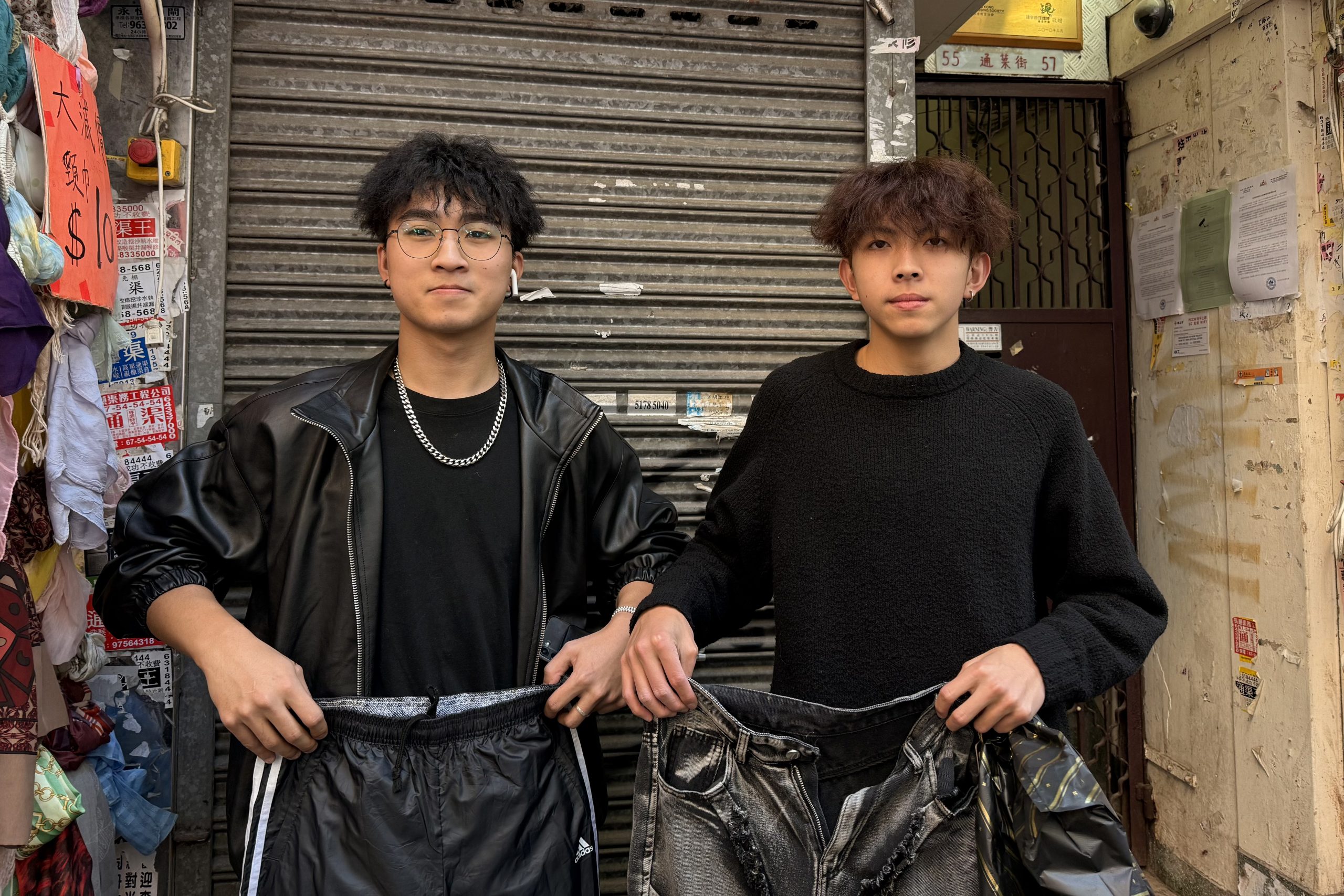
Lam Man-hong, 21, student at Shenzhen Campus of the Chinese University of Hong Kong, said he first learned about sustainability in secondary school.
“Clothing is a daily necessity, and I think it's important to work on education to raise young people's awareness of the importance of environmentally-friendly clothing,” Lam said.
In 2024, 78% of Hong Kong respondents had paid more for sustainably-made or environmentally-friendly products, according to the survey conducted by Echo Asia.
Taylor Chan, 27, a clerk at a security company, said he is not a vintage clothing lover, but he visited CheckThis to support remade environmentally-friendly clothes.
“I used to study fashion design, and I know how wasteful it is. If young people only pursue fast fashion without caring for the environment, they would create a pile of clothing waste,” Chan said.
“If all the vintage stores are willing to do upcycling work, it does not waste the fashion designer's efforts,” he said. “This move protects the environment, and allows the ‘artefact to be reborn’ again.”
Redress, a Hong Kong-based environmental non-governmental organisation, aims to stop fashion waste by creating a circular fashion industry.
Last year, they collected 17 tonnes of clothing, most of which were then donated, recycled, or resold.
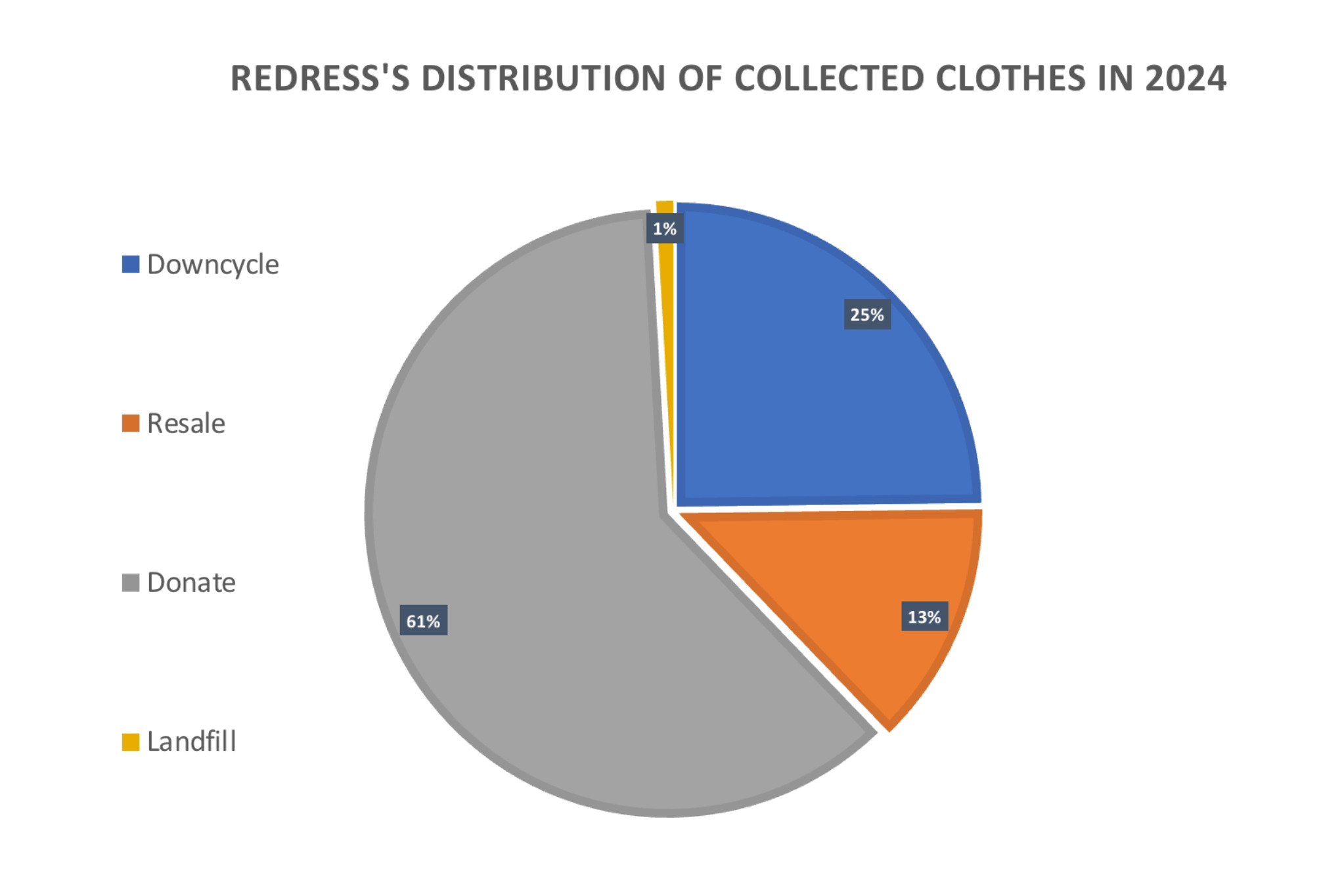
Redress redistributes 99% of collected clothes through several organisations to reduce fashion wasteAnother vintage store, MeeGee, does not sell remade clothes but still attracts crowds because of the various styles provided and cheaper prices.
“Remade vintage is attractive, but it is a lot more expensive than regular vintage after processing. Many shoppers would rather go to regular vintage shops like MeeGee because they are more affordable,” said Yung Yu-ying, a 22-year-old university student.
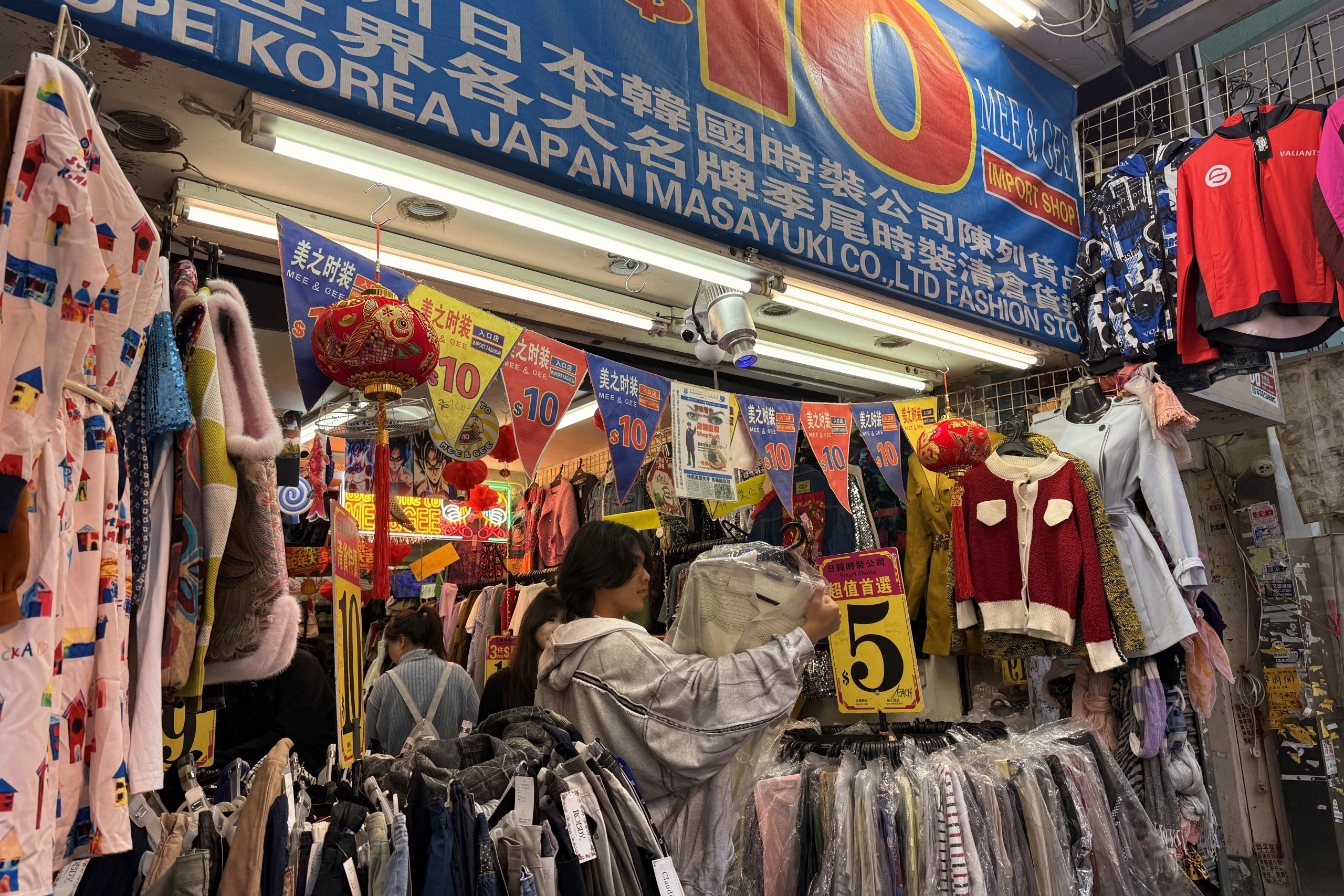
“It is important to be eco-friendly, but there is no point in buying remade vintage if it costs as much as new, fast-fashion clothes, or if the vintage feel is lost due to eco-recycling,” Yung said.
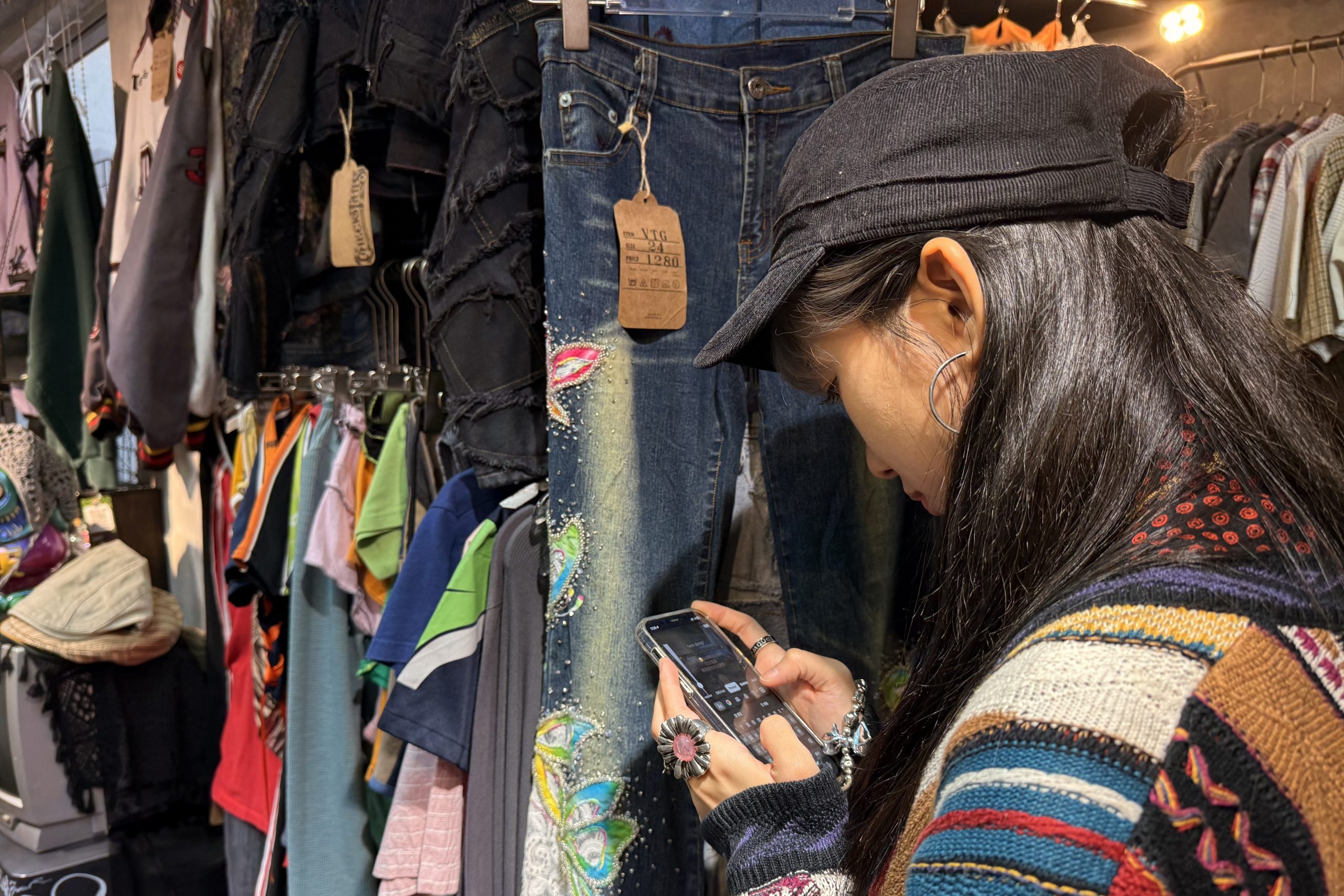
Chung at CheckThis said remade vintage can be costly.
“Our processing plant is in Thailand, which leads to high transportation costs for each shipment,” she said.
“Many small remade clothing shops choose to find manufacturers in China or Thailand because few Hong Kong producers would want to engage in a complex remaking process,” Tsang said.
He added shop owners are forced to either remake items themselves or outsource to foreign manufacturers, which may inevitably raise their carbon footprint.
“The scale of the remade vintage industry remains small because not everything can be upcycled or widely accepted by the public,” Lee said.
“It would be better if schools could allocate more resources to the concept of upcycling, such as offering related courses for students to learn more about sustainability,” Lee said.
“Vintage is popular in Hong Kong, but remade vintage still has a long way to go,” Chung said.
“We hope that more people could focus on environmental protection or sustainable fashion by creatively re-wearing and reinterpreting their old clothes,” she said.
《The Young Reporter》
The Young Reporter (TYR) started as a newspaper in 1969. Today, it is published across multiple media platforms and updated constantly to bring the latest news and analyses to its readers.

Flowers bloom on Valentine’s Day, but not the sales

Meet Hong Kong-born Giant Panda Twin Cubs



Comments